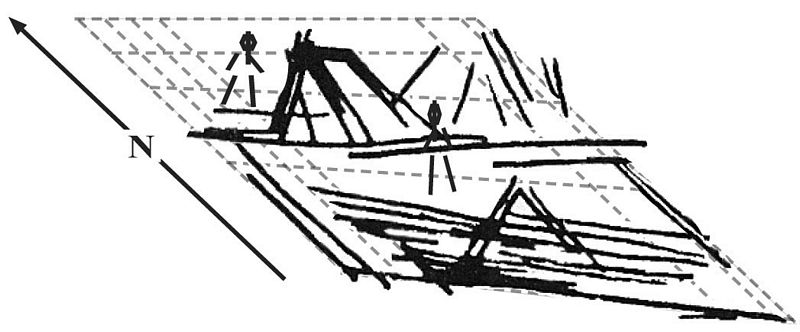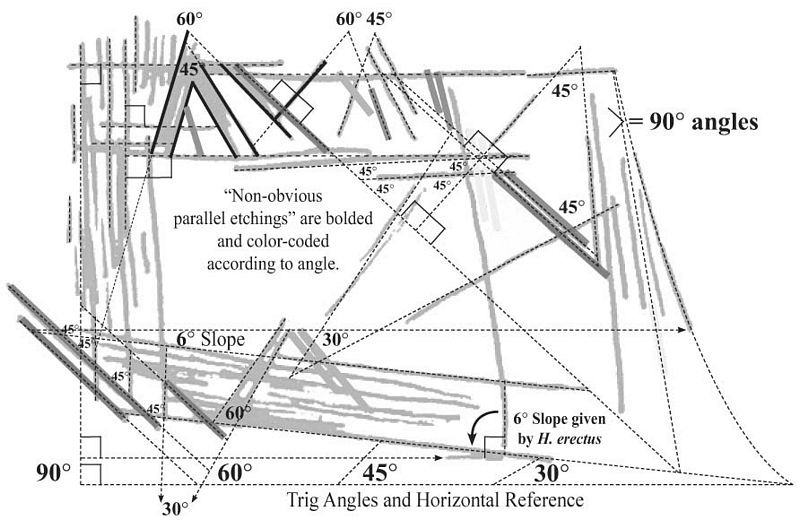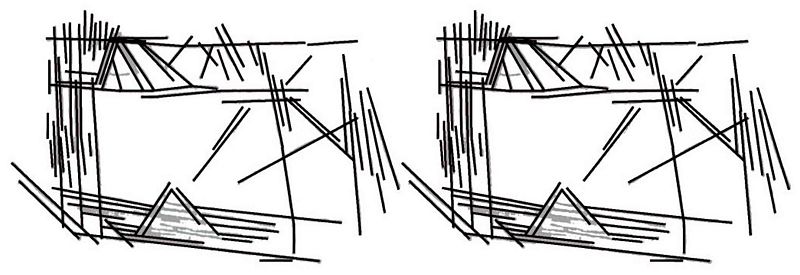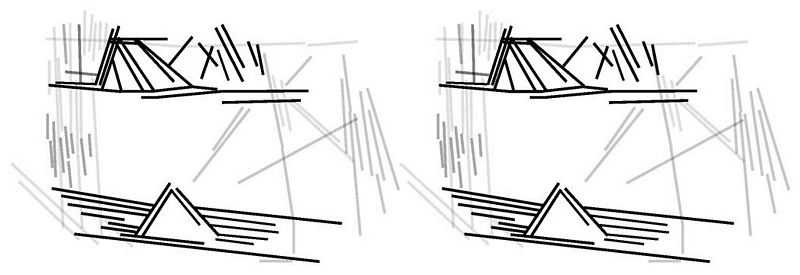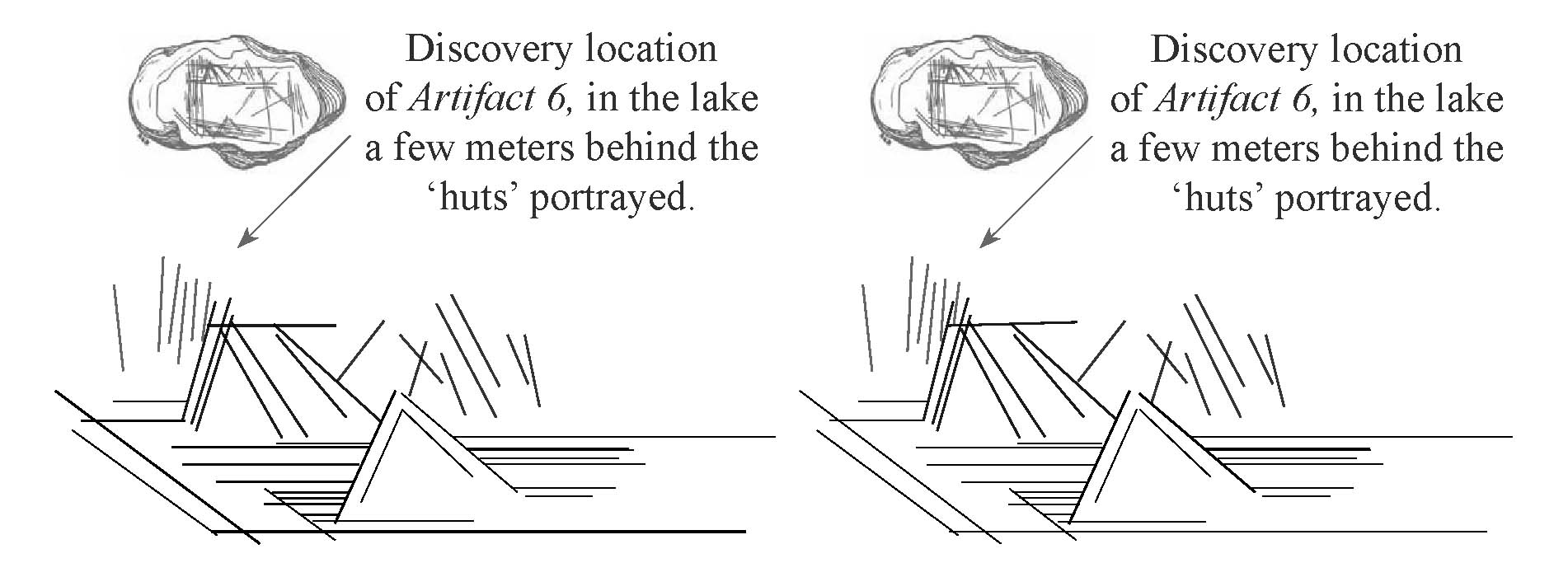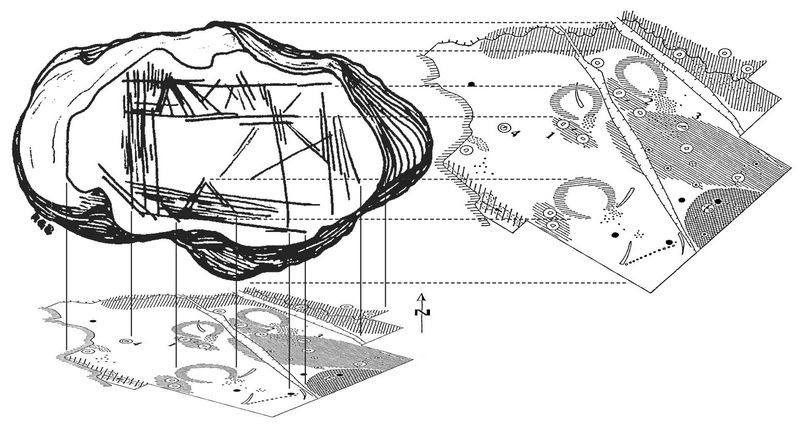
Fig. 1. Fig. 16c from The Graphics of Bilzingsleben showing proposed association between Artifact 6 and layout of the Paleolithic campsite, i.e. that the artifact is a representation of the site created by someone who was there 350,000-years ago. Upper left: Drawing of the artifact by Robert Bednarik used w/permission. Right and below: Details of the site by Dietrich and Ursula Mania used and angled w/permission. Circular areas: dwellings.
However, unlike the other engravings from Bilzingsleben which are perhaps easier to interpret in mainstream terms, the engravings of Artifact 6 (Figs. 1-8, (Fig. 1) are very obviously the work of a skilled and experienced—if not professional—artist.
Despite the rigorous geometric evidence presented in 112 slides at the XV UISPP Congress in Lisbon, 2006, in The Graphics of Bilzingsleben, the science community found it critical to block this paper from publication.
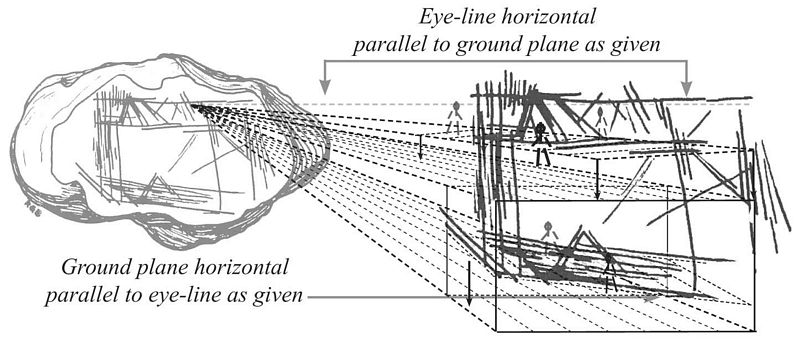
Fig. 2. This is Fig. 16b from the Graphics of Bilzingsleben demonstrating at right the 3D quality of the engravings in 1-point perspective (2-point and multi-view perspectives in later issue). Not-to-scale persons were inserted for sense of space. There can be little doubt that the engraving was meant to convey 3-dimensionality.
Much of this censorship, apart from a 5-year effort by the Congress editors themselves, was done through anonymous peer review at the Journal of Human Evolution. After 15 years of similar experience this was a final straw. Connecting up with other researchers censored in the same way—and some, like Virginia Steen-McIntyre for 40 years—was how the Pleistocene Coalition was formed to demonstrate that mainstream anthropology cannot be trusted to provide the public with an objective picture of human prehistory.
At the UISPP Congress, the nature and exactness of the details in Artifact 6 were proposed to represent something even less believable than Lower Paleolithic art from the evolutionary standpoint—drafting or “technical drawing” of a high caliber including 3D perspective with enough information to create a three-dimensional duplicate in physical space.
‘Artistic’ representations are usually known for their subjective or emotional qualities. Technical or engineering drawings, on the other hand, are known for conveying very specific objective information or facts including measurable elements in several dimensions.
It is not common, even in modern times, for both artistic and technical qualities to be expressed freely and equally in
cont. on p. 12
